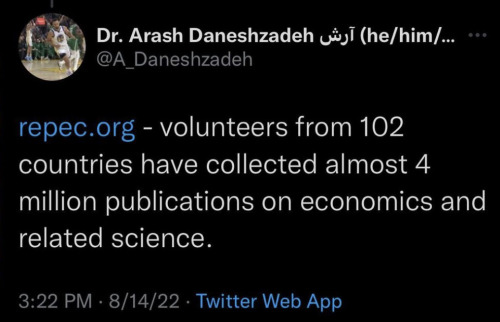Uncharismatic Fact Of The Day
Uncharismatic Fact of the Day
Parrots are far from the only bird able to mimic human speech. Many other birds, like the crow or the mynah. Other animals like my personal favorite, the Macgregor’s bowerbird (Amblyornis macgregoriae), can even mimic other environmental sounds. Here’s a very cool clip from the Netflix documentary Dancing with the Birds, showcasing the wide range of the Macgregor’s bowerbird.
If you like what I do, consider leaving a tip or buying me a kofi!
More Posts from Gatortavern and Others
thank you for the pnat art. Your Sauls are fun and your OCs are neat. I hope you have a good day :)
im so glad you enjoy my art!!! im sorry paranatural fanart isn’t really my focus. thank u so so much for enjoying my saul and oc drawings, that really means a lot and im super glad you like them!! here are some pnat doodles for you anon!! i’m sorry i don’t draw fanart for this comic enough, i hope you have a good day too! thank you so much :-)





Hi! Thank you so much for all the time and help you provide, can't think of a better writing blog to go to. So my question is, what do you think are the most important elements to take into consideration when creating a timeline? How do you make a timeline I guess I'm asking lol :)
Making a Timeline for Your Story
I’m not sure if you’re asking about figuring out the timeline of your story’s events or creating an actual timeline as part of the planning process, so I’ll address both. :)
Figuring Out Your Story’s Timeline of Events
1. First and foremost, figure out a general span of time for your story in terms of the year/s it takes place and the months. If you’re not sure what month your story should begin, consider what needs to be happening then. For example, if there’s going to be snow falling in the first scene, you know your story begins during a winter month.
2. Create a calendar for your story covering the months/years in question. You may just want to download a blank calendar template and print out several that you can fill in by hand.
3. Once you have your calendar printed out, fill in the days of the first month. Then you can choose an appropriate “day one” for your story and jot down what scene or event happens on what day. Remember there will be blank days and that’s fine. Those will be “time skipped.” Doing it on a calendar like this allows you to get a bird’s eye view of the story so you can figure out a likely timeline of events.
Creating a Reference Timeline for Your Story
If you want to do a physical timeline for reference, all that’s really important to include are the date and the actual event.
If you want to, however, you may consider doing a scene list instead. A scene list will include: chapter, scene (I do two scene numbers, the scene within the chapter and then the total scene), the date, and what happens in the scene. So, ultimately, it would look something like this:

This not only helps you keep track of when your scene takes place, but it helps you map out your story so you’re never lost. You can also add other data to the table if you want to, like setting and characters present. You can modify it in any way that works for your story. :)
I hope that helps!
————————————————————————————————-Have a question? My inbox is always open, but make sure to check through my FAQ and post master lists first to see if I’ve already answered a similar question. :)

You know the Legend of Zelda. But have you considered the Legend of Fuecoco?
Short DPXDC Prompts #191
Soulmate au: you get injured, the soulmate keeps the weapon that injures them. Danny has a drawer in his room that’s filled with used bullets and knives and every weapon under the sun and his parents and himself are VERY concerned for his soulmates being. You know when like fairies walk and flowers spring up from their footsteps? Yeah Danny is like that but with weaponry and it’s very worrying.
Dragons and unicorns have such variety in designs!
“Dragon” is such a vague category of creature with such a ridiculous diversity of bauplans. It doesn’t matter how big it is or how many legs it has or whether it has wings or not: you can call it a dragon if it is kind of snakey, and/or breathes fire (virtually anything that can breathe fire has the potential to qualify as a dragon).
Case in point, look at all these different things that are dragons:


Study clarifies mystery of crocodilian hemoglobin
The success of a croc’s ambush lies in the nanoscopic scuba tanks—hemoglobins—that course through its bloodstream, unloading oxygen from lungs to tissues at a slow but steady clip that allows it to go hours without air.
sulc.us/crochemo

How the brain’s immune system could be harnessed to improve memory
When it comes to memory, immune cells are known as the “bad cops” of the brain. But new research shows they could also be turned into “good cops” to power memory and learning.
Inflammation can send the brain’s immune cells into damaging hyperdrive, and this has been linked to neurodegenerative diseases that affect memory, like dementia.
In the new study, researchers at RMIT found that these same immune cells – known as microglia – can also be activated to have the reverse effect.
When the microglia were altered in rats, their performance in simple memory tasks improved by up to 50%, rather than deteriorating.
While the effect was temporary, the discovery suggests these cells could be targeted in the development of new therapies designed to enhance memory formation, with the hope of preventing cognitive decline as people grow older.
Worldwide, around 50 million people have dementia, with nearly 10 million new cases each year. In Australia, dementia and ageing-related cognitive decline affect 9% of people aged over 65.
Chief Investigator and senior author, Associate Professor Sarah Spencer, said the unexpected results of the study expanded our understanding of memory formation and the role of neuroinflammation in memory loss.
“Cognitive decline is a big problem for our ageing population, and we currently have very few treatments to treat or prevent it,” Spencer said.
“Even in healthy adults, optimising how well we learn and remember can give us a substantial performance edge at work and socially.
“Our study has for the first time shown a link between changes in the immune cells of healthy brains and improved cognitive function.
“While it’s early days and a lot more research is needed, we hope our findings may lead to new therapies that can stimulate these immune cells to boost memory and keep our brains powering as we age.”

(Image caption: A magnified image showing the regenerated microglia. They have a similar shape to the “activated” shape that the brain’s immune cells have when dealing with inflammation. Credit: Alita Soch)
Activating memory with activated microglia
In the study, published in Journal of Neuroinflammation, the researchers worked with a unique type of rat to test the effect of microglia on cognitive function.
The study looked at how the rats performed memory tasks when the immune cells were present and compared this with their performance when almost all the microglia were knocked out.
They found that removing almost all the microglia made no difference in memory tasks.
But when the microglia regenerated, this led to astounding results: researchers ran the same memory tests on the rats and they performed 25-50% better than normal rats.
Importantly, the regenerated microglia were a different shape - similar to the “activated” shape that these cells have when dealing with inflammation.
“We are still exploring what makes these cells different when they repopulate the brain, but their shape tells us they may be more active than usual, potentially making the neurons more effective to encourage better memory,” Spencer, an NHMRC Career Development Fellow at RMIT, said.
“The effect doesn’t last. As the microglia go back to their usual shape, memory performance also goes back to normal.
“The next stage in the research is closely investigating these regenerated microglia to better understand the mechanisms at work, with the aim of finding ways to turn the temporary memory boost into a long-lasting effect.”
Microglia-suppressing therapies are currently being tested in clinical trials in the US, as potential treatments for Multiple Sclerosis.
“With our new understanding of the role of microglia in memory, it may be possible in future to test the therapies originally designed for MS and assess their potential in improving cognitive function as well,” Spencer said.
we're sleeping on how varied crocodilians are in colour and pattern
Yacare caiman

Tomistoma

Cuban crocodile

Cuvier's dwarf caiman

West African crocodile

American alligator

Saltwater crocodile

New Guinea crocodile



refseek.com

www.worldcat.org/

link.springer.com

http://bioline.org.br/

repec.org

science.gov

pdfdrive.com
-
 thebirderrrrrrrrrrrrrr reblogged this · 3 months ago
thebirderrrrrrrrrrrrrr reblogged this · 3 months ago -
 babajagka reblogged this · 6 months ago
babajagka reblogged this · 6 months ago -
 babajagka liked this · 6 months ago
babajagka liked this · 6 months ago -
 a-strange-grey reblogged this · 2 years ago
a-strange-grey reblogged this · 2 years ago -
 a-strange-grey liked this · 2 years ago
a-strange-grey liked this · 2 years ago -
 roshytsunami reblogged this · 2 years ago
roshytsunami reblogged this · 2 years ago -
 decafvillain liked this · 2 years ago
decafvillain liked this · 2 years ago -
 pizzadragons reblogged this · 2 years ago
pizzadragons reblogged this · 2 years ago -
 realsadmagician liked this · 2 years ago
realsadmagician liked this · 2 years ago -
 sands-from-a-dead-sea liked this · 2 years ago
sands-from-a-dead-sea liked this · 2 years ago -
 mossrotts reblogged this · 2 years ago
mossrotts reblogged this · 2 years ago -
 badolmen reblogged this · 2 years ago
badolmen reblogged this · 2 years ago -
 leopardsealz liked this · 2 years ago
leopardsealz liked this · 2 years ago -
 leopardsealz reblogged this · 2 years ago
leopardsealz reblogged this · 2 years ago -
 starstablegeek liked this · 2 years ago
starstablegeek liked this · 2 years ago -
 uselessfish liked this · 2 years ago
uselessfish liked this · 2 years ago -
 flamefirenut liked this · 2 years ago
flamefirenut liked this · 2 years ago -
 bellflower-goat liked this · 2 years ago
bellflower-goat liked this · 2 years ago -
 winterswrandomness reblogged this · 2 years ago
winterswrandomness reblogged this · 2 years ago -
 theresguysoutthere reblogged this · 2 years ago
theresguysoutthere reblogged this · 2 years ago -
 two-eleven-thirty-four liked this · 2 years ago
two-eleven-thirty-four liked this · 2 years ago -
 kyanve reblogged this · 2 years ago
kyanve reblogged this · 2 years ago -
 faefelidae reblogged this · 2 years ago
faefelidae reblogged this · 2 years ago -
 selectivegeekwithstandards liked this · 2 years ago
selectivegeekwithstandards liked this · 2 years ago -
 shadowdemon37 liked this · 2 years ago
shadowdemon37 liked this · 2 years ago -
 memento-mariii liked this · 2 years ago
memento-mariii liked this · 2 years ago -
 patrokleos reblogged this · 2 years ago
patrokleos reblogged this · 2 years ago -
 patrokleos liked this · 2 years ago
patrokleos liked this · 2 years ago -
 axxxisdenied reblogged this · 2 years ago
axxxisdenied reblogged this · 2 years ago -
 axxxisdenied liked this · 2 years ago
axxxisdenied liked this · 2 years ago -
 ouropod reblogged this · 2 years ago
ouropod reblogged this · 2 years ago -
 ouropod liked this · 2 years ago
ouropod liked this · 2 years ago -
 famouslysleepy reblogged this · 2 years ago
famouslysleepy reblogged this · 2 years ago -
 ohlookatthose reblogged this · 2 years ago
ohlookatthose reblogged this · 2 years ago -
 focshi liked this · 2 years ago
focshi liked this · 2 years ago -
 actuallycuteanimals reblogged this · 2 years ago
actuallycuteanimals reblogged this · 2 years ago -
 icymorpher reblogged this · 2 years ago
icymorpher reblogged this · 2 years ago -
 xdramarenamed liked this · 2 years ago
xdramarenamed liked this · 2 years ago -
 olaena liked this · 2 years ago
olaena liked this · 2 years ago -
 zackaran reblogged this · 2 years ago
zackaran reblogged this · 2 years ago -
 zealousartisantimemachine-blog liked this · 2 years ago
zealousartisantimemachine-blog liked this · 2 years ago -
 aleglessoverlookednovemberecho reblogged this · 2 years ago
aleglessoverlookednovemberecho reblogged this · 2 years ago -
 sbslink liked this · 2 years ago
sbslink liked this · 2 years ago -
 gatortavern reblogged this · 2 years ago
gatortavern reblogged this · 2 years ago -
 gatortavern liked this · 2 years ago
gatortavern liked this · 2 years ago -
 casperwyomingxer reblogged this · 2 years ago
casperwyomingxer reblogged this · 2 years ago -
 casperwyomingxer liked this · 2 years ago
casperwyomingxer liked this · 2 years ago -
 hearthawk liked this · 2 years ago
hearthawk liked this · 2 years ago -
 moriamori reblogged this · 2 years ago
moriamori reblogged this · 2 years ago -
 phaser350 liked this · 2 years ago
phaser350 liked this · 2 years ago

A Cozy Cabana for Crocodiles, Alligators and their ancestors. -fan of the webcomic Paranatural, Pokemon, Hideo Kojima titles -updates/posts infrequently
237 posts
